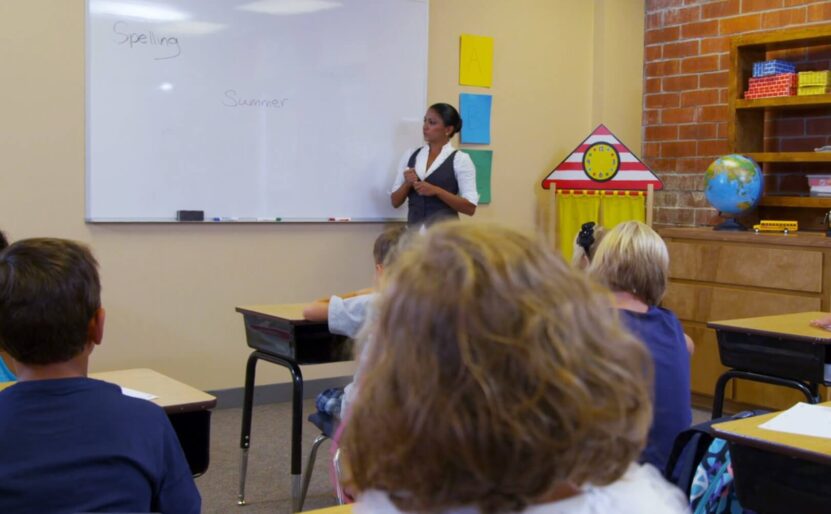
Share Post:
Each year marks a significant step in our child’s development and academic progress, from the tentative first days of kindergarten, where they might clutch their lunchboxes a little too tightly, to the proud strides into high school, where they start to carve out their future paths.
Today, we’ll explore the typical age range for each grade, from kindergarten through to the twelfth grade. This can serve as a helpful guide to ensure your child is on track, discuss placement with educators, or simply satiate your curiosity about what to expect as your child advances through their educational career.
Table of Contents
ToggleA Quick Look
Grade Level
Typical Age
Preschool
3-4 years old
Kindergarten
5 years old
1st Grade
6 years old
2nd Grade
7 years old
3rd Grade
8 years old
4th Grade
9 years old
5th Grade
10 years old
6th Grade
11 years old
7th Grade
12 years old
8th Grade
13 years old
9th Grade (Freshman)
14 years old
10th Grade (Sophomore)
15 years old
11th Grade (Junior)
16 years old
12th Grade (Senior)
17-18 years old
The Basics of the U.S. Education System
The overall structure of the U.S. education system is pretty simple:
- Preschool: Optional and usually for children aged 3-4.
- Elementary School: Grades K-5, typically for children aged 5-10.
- Middle School (Junior High): Grades 6-8, typically for children aged 11-13.
- High School: Grades 9-12, typically for teens aged 14-18.
Preschool
Preschool serves as the initial formal educational setting for children, typically starting as early as age 3 and continuing until they are ready for kindergarten. In preschool, young learners engage in foundational activities designed to develop their social, emotional, and cognitive skills.
The curriculum often includes basic literacy and numeracy, arts and crafts, and structured playtime, all crucial for early development. This stage of education is not mandatory, and while some programs may be fee-based, there are also free options available through programs like Head Start for families with low income.
Elementary School

During these formative years, students typically remain in a single classroom for most subjects, learning from one teacher who covers a variety of topics.
The core curriculum includes reading, writing, basic math, science, and social studies. The educational focus is on developing fundamental skills in literacy and numeracy, alongside fostering critical thinking and problem-solving abilities.
Elementary school lays the groundwork for all future academic endeavors by establishing basic academic skills and encouraging a positive attitude towards schooling.
- Kindergarten: Age 5
- 1st Grade: Age 6
- 2nd Grade: Age 7
- 3rd Grade: Age 8
- 4th Grade: Age 9
- 5th Grade: Age 10
Middle School
Middle school, also known as junior high, covers grades 6 through 8. It serves as a bridge between elementary school and high school, with students typically falling into the following age ranges:
- 6th Grade: Age 11
- 7th Grade: Age 12
- 8th Grade: Age 13
This educational phase introduces students to a more departmentalized approach to learning, where they transition between multiple classrooms and teachers throughout the day, each specializing in subjects such as English, mathematics, sciences, and social studies.
High School

High school is the final stage of compulsory education in the U.S. , encompassing grades 9 through 12. Students here are usually aged 14 to 18. Each grade level has its own designation:
- 9th Grade (Freshman): Age 14
- 10th Grade (Sophomore): Age 15
- 11th Grade (Junior): Age 16
- 12th Grade (Senior): Age 17-18
High school curriculum is designed to enhance students’ analytical, problem-solving, and critical thinking skills, preparing them for college, vocational training, or employment after graduation.
Secondary School Options
In addition to the traditional high school path, there are secondary schools focusing on technical and vocational training.
These schools prepare students for specific careers and can be an alternative to the conventional high school experience.
Are There Any Exceptions?
While the ages listed above are typical, several factors can influence grade placement, such as:
- Birthdate Cutoffs: Different states have varying cutoff dates for school entry.
- Academic Assessments: New students, especially those from different countries, may undergo assessments to determine the appropriate grade level.
- Special Programs: Some students might be placed in grades that match their academic abilities rather than their age.
Public Education and Costs

Public education from elementary through high school is free in the U.S. This system ensures that all children have access to education regardless of their family’s financial situation. However, preschool is an exception. While it’s not mandatory, it usually comes with a cost.
Funding Sources
Public education funding primarily comes from state and local governments, with additional contributions from the federal government.
Total funding for K-12 public education from federal, state, and local sources amounts to $878.2 billion, or $17,700 per pupil.
A significant portion of spending (89%) goes towards operational costs, including salaries and benefits for public school employees. Expenditures also cover instructional materials, school maintenance, transportation, and other operational needs.
Per Pupil Spending
In fiscal year 2022, the average spending per pupil in U.S. public schools rose to $15,633, and this fee is constantly on the rise.
Higher Education Costs

Average yearly tuition at public four-year colleges and universities increased from about $4,900 to nearly $11,000 over the past three decades (adjusted for inflation).
Spending Trends
Public school spending in the U.S. saw the largest annual increase in over 20 years, with an 8.9% rise in spending per pupil in fiscal year 2022.
Need for Funding Overhaul
There’s a recognized need for an overhaul in public education funding to address disparities and meet global benchmarks. The allocation of resources is uneven across states, impacting the quality of education.
Post-High School Options

After high school, students have several pathways to further their education:
- Public and Private Colleges: Offer undergraduate and graduate degrees in a variety of fields.
- Community Colleges: Provide two-year associate degrees and certificates.
- Universities: Offer undergraduate, graduate, and professional degrees.
Special Considerations for Refugee Students
Refugee students may face unique challenges when entering the U.S. education system.
Final Words
The U.S. education system is structured to support children’s growth and learning from a young age through their teenage years. By understanding the typical age ranges for each grade level, parents and guardians can better navigate their children’s educational journey.
Remember, each child’s path may vary, and it’s important to consult with academic professionals for specific guidance on grade placement and educational options.
Related Posts:









